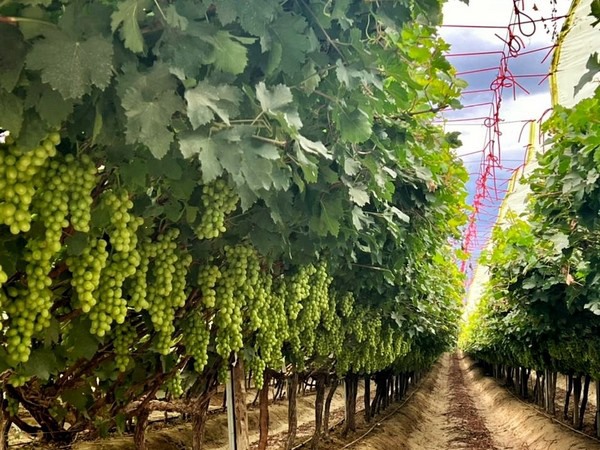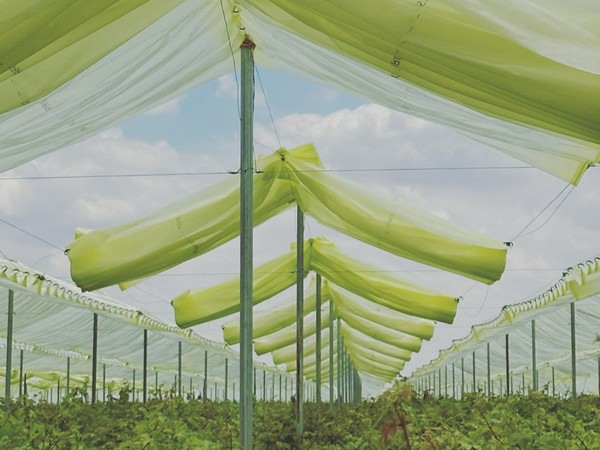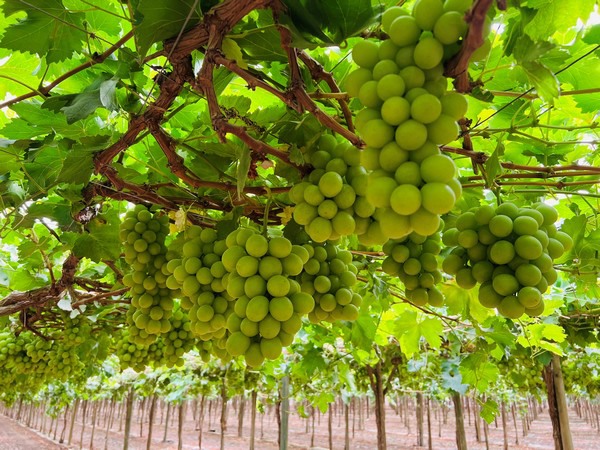‘If it sees a cloud it bursts’ was the saying for some of the older generation table grape cultivars. Nowadays in Peru, despite over 230 mm of rain, a good double harvest (second harvest) is made possible through the use of specially designed plastic covers. The tailor-made plastic film, designed and installed by SerroPlast is used in Chile as well, not only for grapes, but for other leading export crops of blueberries and cherries to control the most challenging climate factors – rain, wind and excess radiation.

According to Sebastian Escalona, Product Manager of SerroPlast Latam in Peru and Chile, it is much more than just pulling over any old plastic to provide cover to fruit.
“Just in the case of 2023 in Piura, after more than 230 mm of rain, we are starting the harvest of 211 hectares equivalent to 4,500 tons of grapes for export. The fruit is performing well, with minimal issues related to splits and bunch rots. Some small surfaces were left without covers to compare the fruit behaviour, here the losses are more than 85%. The first thing is to contextualize the phenomenon of this rain. It started in February of this year. Therefore, they have created problems only in late harvest grapes (in the case of Ica) and in double harvests (in the case of northern Peru in Piura). Both of them are fruit productions that are part of the smaller volume in each farm, between March and April, while the majority of the harvest is concentrated between the months of October to January. In general, our plastic covers in Peru covers a total of 1,576 hectares, within which 211 hectares are used for late and/or double harvests, 16 ha in Ica and 195 in Piura respectively.”

Plastic covers in Peru are used for different purposes, such as to increase the quality, vigour and production, for earlier harvests, to save water, for pesticide reduction while rain protection is one of the most important targets he says. “During December to April, the risk of rain increases dramatically, so it is very difficult to produce grapes without any protection system because of damages in the fruit and high disease pressure (Bunch rots and downy mildew). In addition, some growers are starting to do a ´double harvest´ (October and April) and the use of plastic films is a must to ensure the volume and quality,” explains Escalona.
Over the past few years a pattern of more rain during the table grape harvest seasons in Peru and Chile has created many challenges for producers. “Climate variability is a reality that cannot be ignored and since the business is increasingly competitive, it is essential for growers to be able to have consistency in production year after year and maintain the quality of the fruit over time. We are sure that plastic covers are an effective tool in controlling rain damage. However, it should always be considered before embarking on the use of this technology, the variety, system design, geographic area, and specific weather conditions of each location. What sets us apart are the years of experience with different climatic conditions and the knowledge of the varietal behaviour in different places of grape production,” states Escalona.

SerroPlast, with its Italian company roots, plastic covers are reusable after one season. “After many years, we have found that three complete seasons is a correct balance in terms of cost-benefits. If we produce a plastic for less than that, it can be too expensive for the grower. If the film is used just for some months per year (2-3) and then stored, it can last 4-5 years. For that purpose the retractable system design can help a lot to manipulate the cover and reduce costs.”
Escalona concludes by stating: “The main problem is that in a rainy scenario like this, with 180mm of water (average). There are not many alternatives that can solve the problem. This is where the plastic covers save the business in a definitive way.”
For more information:
Sebastian Escalona
SerroPlast Latam
Tel: +51 9 473 39992
Email: sescalona@serroplast.cl
www.serroplast.it
